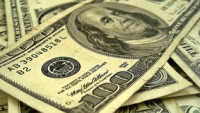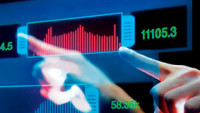 Yesterday saw another day of uncertainty and market declines on claims and counterclaims between Russia and NATO about the size and movement of Russian forces on the Ukrainian border.
Yesterday saw another day of uncertainty and market declines on claims and counterclaims between Russia and NATO about the size and movement of Russian forces on the Ukrainian border.
Russia has continued to deny that it is increasing the size of its forces, while reports of shelling and firing on a village in Eastern Ukraine by pro-Russian forces, hasn’t helped sentiment, with those same forces blaming Ukraine for the shelling.
The uncertainty prompted further declines in Europe as all the Wednesday gains on reports of a Russian withdrawal of some of their troops disappeared in a proverbial puff of smoke.
It is becoming increasingly clear that the US appears to think a Russian invasion is only a matter of time, and whether it comes this week, or in a few days, US officials want it to be clear that if, and when it does happen, Russia won’t be able to hide behind a “false flag” event to justify it.
US markets also suffered with their biggest declines this year, although with a long weekend coming up the thinner liquidity could also be playing a part.
Asia markets have also slipped back this morning although the declines have been tempered by US secretary of state Anthony Blinken accepting an invitation from Russia’s Russian foreign minister Sergey Lavrov to meet next week, provided there is no further Russian incursions into Ukraine. This development looks set to see markets here in Europe open modestly higher on the basis that if the US and Russia continue to talk then the prospect of war has diminished for the time being.
St. Louis Fed President James Bullard was on the wires again yesterday, once again pushing his case for a 1% increase in rates by July, with 50bps in March, just in case no one had heard him the first time, or the second time for that matter.
Thankfully, we should hear some fresh voices later today with Chicago Fed president Charles Evans, Fed governor Chris Waller, New York Fed President John Williams and governor Lael Brainard all offering their ten cents worth on what the Fed might do in March.
With markets here in Europe set to open modestly higher the main focus will be on the latest UK retail sales for January.
Earlier this week UK CPI edged up to a new 30 year high of 5.5%, and more worryingly for those looking for signs of a top in price pressures there was little sign of a slowdown in the more forward-looking PPI numbers which continued to rise as output prices came in at their highest levels since 2008 at 9.9%.
More encouragingly there does appear to be some evidence of upward pressure in wages after average weekly earnings rose by 4.3% in December. We’ve also seen some of the major retailers announce significant pay increases for their staff members with the likes of Tesco, Sainsbury, Aldi, and Lidl all announcing that they are raising pay in line or above inflation, from February or March.
These measures won’t yet show up in the latest wages numbers but will go some way to addressing some of the cost-of-living pressures of the last few months, however what’s coming in April in the form of National Insurance changes and energy price cap increase will more than wipe out that benefit.
That said today’s January retail sales numbers should offer some respite, after the horror show that was the December retail sales numbers.
In the wake of the Government’s rollout of Plan B restrictions in mid-December, sales volumes plunged as consumers stayed at home, and limited their social contacts.
The -3.6% decline in sales saw most of the pain felt in pubs and hospitality, although high street retail also felt the effects with lower footfall, and although there may have been a bit of a rebound between Christmas and New Year, confidence post New Year appears to have taken a knock, after consumer confidence slipped to an 11-month low in January.
There appears to be little doubt that the surge in prices seen in the last two months has shaken consumer confidence and caused a significant pullback in spending habits. The recent BRC retail sales numbers saw a decent rebound in January, as sales of homeware and electronics bounced back, while food sales slipped back.
If the recent BRC numbers are any guide we should expect to see a modest improvement, with a rise of 1.2% expected, however rising prices and shrinking real incomes is likely to see UK consumers rein in their spending in the coming months.
EUR/USD – a quieter day yesterday, we need to get back above 1.1420 to retarget the highs at 1.1485. A move below 1.1270 retargets the lows this year at 1.1120.
GBP/USD – edging back above the 1.3600 area, but we need to sustain a move above 1.3630 to target the 1.3720 area. Support comes in at trend line support at 1.3440, from the December lows, as well as the 50-day MA.
EUR/GBP – continues to slip lower, with resistance just above 0.8400, at the 0.8410/20 area. While below 0.8420, the bias remains for a to a retest of the 0.8280 lows earlier this month.
USD/JPY – slipped below the 115.00 area, with further support at the 114.70 area. If we drop below the 114.70 area, we could slip back to 113.80. Resistance currently at 115.80.












